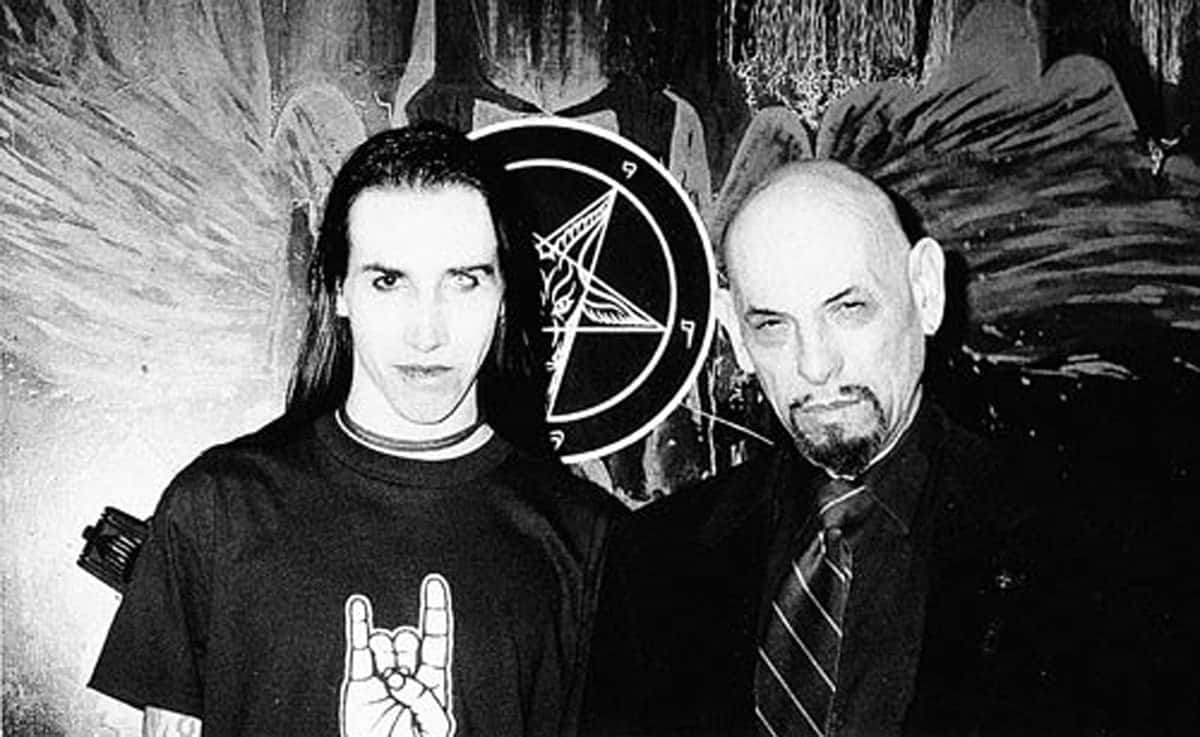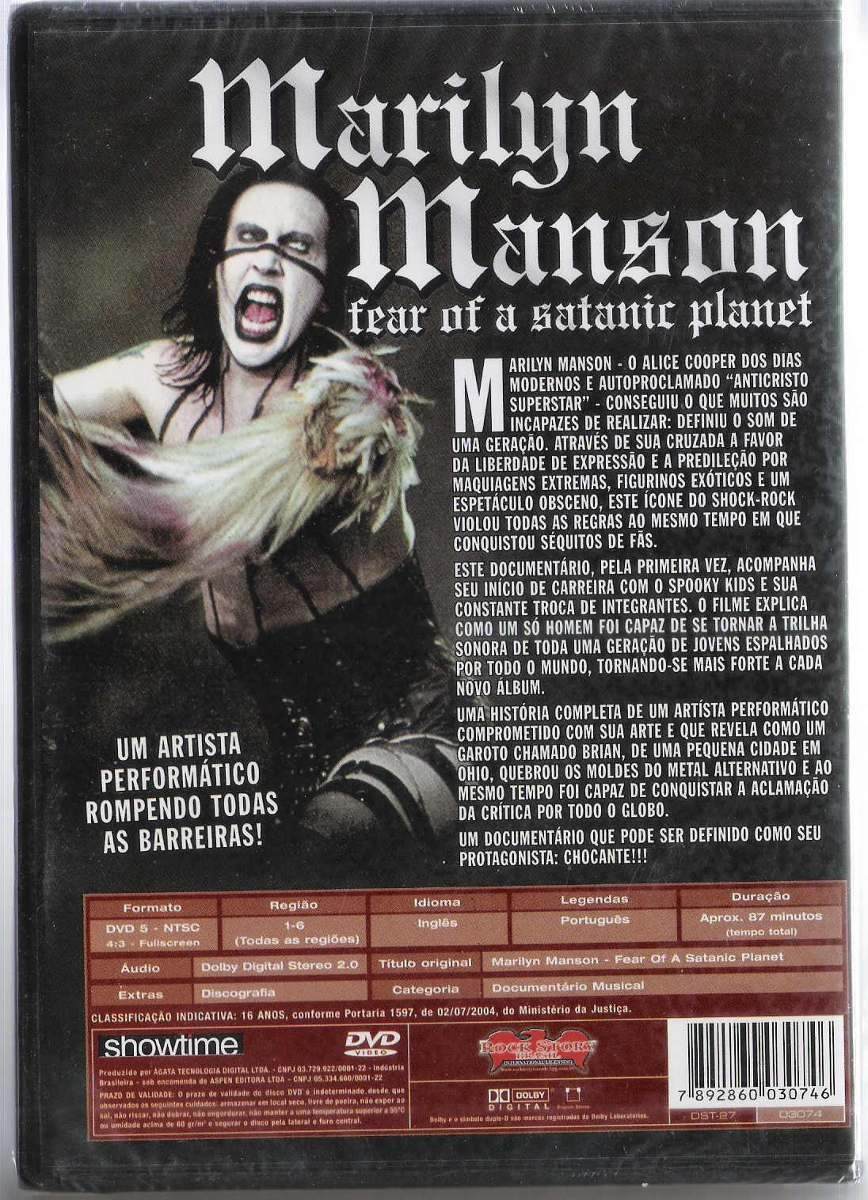Marilyn Manson, the iconic and often polarizing rock star, has captivated audiences worldwide with his provocative persona and theatrical performances. Frequently labeled as a satanist, Manson's artistic expression delves deeply into themes of rebellion, darkness, and the macabre, sparking intense debates among fans and critics alike. However, understanding the true essence of the man behind the mask involves a thorough exploration of his life, art, and the societal perceptions that have shaped his public image.
As a figure who has consistently walked the fine line between fame and infamy, Manson's public persona has been both celebrated and criticized. His music and performances often serve as a powerful commentary on societal norms, religious ideologies, and the complexities of the human condition. This makes it challenging to distinguish the artist from the persona he presents on stage. This article aims to delve into the intricate layers of Marilyn Manson's identity, examining the origins of his controversial image and the implications of the satanic label often associated with him.
From his humble beginnings to his meteoric rise in the music industry, we will explore the various factors that have contributed to the narrative surrounding Marilyn Manson. Is he truly a satanist, or is this perception merely a product of cultural fear and misunderstanding? Join us as we embark on a journey through the enigmatic life of Marilyn Manson, seeking to uncover the truth behind the myth and the man.
Read also:Discover The Magic Of Vegas Apple Tv
Unveiling Marilyn Manson: The Man Behind the Mask
Marilyn Manson, whose real name is Brian Hugh Warner, is an American musician, actor, and multidisciplinary artist renowned for his controversial stage persona and groundbreaking music. Gaining widespread recognition in the 1990s with his band, Marilyn Manson, he merged elements of rock, metal, and industrial music to create a unique sound that resonated with fans globally. Manson's theatrical performances and provocative lyrics often challenge societal norms and conventions, earning him both admiration and criticism. His ability to blend music with performance art has solidified his reputation as a pivotal figure in the realm of alternative rock.
Marilyn Manson's Early Life and Career
| Attribute | Details |
|---|---|
| Name | Brian Hugh Warner |
| Stage Name | Marilyn Manson |
| Date of Birth | January 5, 1969 |
| Place of Birth | Canton, Ohio, USA |
| Genres | Industrial Metal, Alternative Rock |
| Years Active | 1989 - Present |
| Notable Albums | Antichrist Superstar, Mechanical Animals, Holy Wood |
| Occupation | Musician, Actor, Artist |
The Architect of His Persona: Influences and Inspirations
Marilyn Manson's distinctive image is a product of a myriad of personal experiences and societal influences. Raised in a conservative environment, Manson often felt like an outsider, a sentiment that significantly shaped his worldview. His early fascination with horror films, literature, and the darker aspects of life laid the foundation for his artistic vision and contributed to the creation of his controversial persona. These influences not only informed his music but also played a crucial role in defining the aesthetic and thematic elements of his performances.
The Sonic Landscape: How Manson's Music Reflects His Worldview
The lyrics and themes present in Marilyn Manson's music frequently explore subjects such as religion, identity, and societal issues. Tracks like "Antichrist Superstar" and "The Beautiful People" delve into the tension between individualism and conformity, reflecting Manson's philosophical and ideological perspectives. His music serves as a platform for expressing his thoughts, challenging the status quo, and encouraging listeners to question their beliefs and societal norms. Through his art, Manson invites audiences to engage in a deeper exploration of the complexities of modern life.
Debunking the Myth: Is Marilyn Manson a Satanist?
The question of whether Marilyn Manson is a satanist has been a subject of intense scrutiny and debate. Manson himself has often described his persona as a critique of organized religion rather than an endorsement of satanism. He employs symbols and imagery associated with the occult as a means of provoking thought and sparking discussions about the nature of good and evil. This approach allows him to challenge societal norms and push the boundaries of artistic expression.
Perception vs. Reality: What Critics Say About Manson's Beliefs
Critics of Marilyn Manson frequently label him as a satanist due to his use of dark imagery and provocative lyrics. This perception has resulted in numerous controversies, including public protests and calls for censorship. However, many fans argue that Manson's work is often misinterpreted, and his intention is to challenge societal norms rather than promote any specific ideology. Understanding his art requires looking beyond surface-level interpretations and engaging with the deeper meanings embedded within his music and performances.
The Evolution of an Icon: Manson's Journey Through Time
Throughout his illustrious career, Marilyn Manson's persona has undergone significant transformations. Initially emerging as a shock rocker in the 1990s, he has since ventured into various artistic domains, including acting and visual arts. This evolution reflects his desire to continually innovate and adapt to the ever-changing landscape of popular culture. Each phase of his career has further blurred the lines between the artist and the character he portrays, adding layers of complexity to his public image.
Read also:Charli Damelios Roblox Adventure A New Chapter In Social Media Gaming
Legacy in Question: What Will Marilyn Manson Be Remembered For?
As a polarizing figure in the music industry, Marilyn Manson's legacy will undoubtedly be a topic of debate for generations to come. While some view him as a groundbreaking artist who fearlessly challenged societal norms, others see him as a controversial figure whose work promotes negative ideologies. Regardless of public opinion, Manson's influence on music, art, and culture is both profound and undeniable. His contributions have left an indelible mark on the world, shaping the trajectory of alternative music and inspiring countless artists and fans alike.
Final Thoughts: Beyond the Labels
In conclusion, the question of whether Marilyn Manson is a satanist is far more complex and nuanced than it appears on the surface. His use of dark imagery and themes in his art often leads to misconceptions about his beliefs. However, it is crucial to recognize that Manson's work serves as a commentary on society rather than a promotion of any specific ideology. To truly understand the man behind the music, one must look beyond the sensationalism and delve into the deeper meanings and intentions underlying his art. Manson's legacy will continue to inspire and challenge audiences, reminding us of the power of art to provoke thought and spark meaningful discussions.


